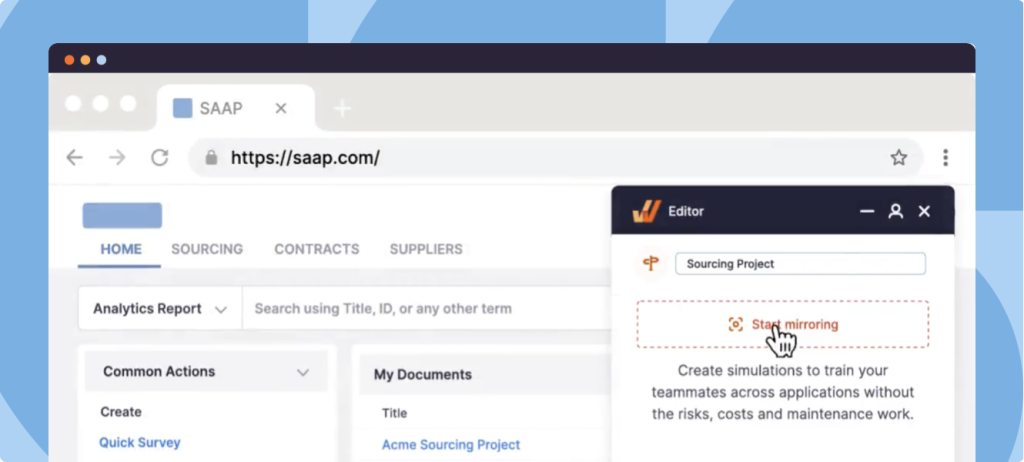Software truly makes the world go around. In today’s digital world, virtually all businesses rely on all types of software to operate. This makes it critical for IT teams to launch updates without a hitch and enable employees with end-user training to accelerate time-to-proficiency.
To avoid any disruptions to business operations, IT teams often use simulations of software applications to test updates and changes, and to train employees on software they use for work.
Virtual IT training lab software allows teams to access externally hosted virtual labs or create their own simulated sandbox environments to provide hands-on training on web applications without risking live software usage.
In this article, we will explain virtual IT training labs and give you a rundown of the top options on the market today. We will also provide best practices for selecting the best virtual IT lab for your team and answer some frequently asked questions about these applications – and why Whatfix Mirror is the best solution to quickly create replica sandbox environments of your web applications and enterprise software for user training purposes.
What are the top virtual IT training lab tools?
- Whatfix Mirror
- KodeKloud
- Cloudshare
- Assima
- Bright Software
- ReadyTech
- SafeBox
- Appsembler Virtual Labs
- CloudLabs
- Instruqt
- ITPro
What Is a Virtual IT Training Lab?
Virtual IT training labs, also called virtual labs, are non-production software environments that provide users with a risk-free opportunity to learn new software, new features, or new procedures. Virtual IT labs simulate real-world software scenarios that empower employees to engage in trial and error with the option to wipe the slate clean between activities. This software also allows learning and development (L&D) teams to implement a hands-on approach to workplace learning that is becoming increasingly popular due to its positive effects on employee performance, learning retention, and employee engagement.
Virtual IT training lab environments can be cloud-based or built in-house. Either way, the simulated environments can be populated with all the bells, whistles, and data a live environment would have. Many virtual IT training lab providers offer a range of environment types, including software simulations, sandboxes, and collaborative labs. This versatility makes virtual IT training labs less restrictive than simpler types of simulated environment software.
Virtual labs are rapidly rising in popularity due to their wide variety of applications, with 39 virtual IT labs software listed on G2. If you’re unsure of where to start, we are here to help.
11 Best Virtual IT Labs Software in 2024
Every organization has unique requirements for learning and development software. From budgets to skill gaps to organizational goals, there are many factors to consider when choosing a virtual IT lab solution for your company. Here are the top virtual IT labs software on the market today
- Whatfix Mirror
- KodeKloud
- Cloudshare
- Assima
- Bright Software
- ReadyTech
- SafeBox
- Appsembler Virtual Labs
- CloudLabs
- Instruqt
- ITPro
1. Whatfix Mirror
- Pricing: Contact Whatfix for a custom quote
- Rating: 4.6/5
- Best for: Creating sandbox environments of enterprise software (think ERP, CRM, etc.) for hands-on IT training.
Whatfix Mirror is a simulation software that allows teams to create interactive replicas of workplace software environments and web applications for hands-on, risk-free end-user training and product demonstrations. This virtual IT lab software enables employees to learn workflows and explore workplace software without risking any impact on the live application.
Whatfix allows users to easily create training environments and redact or replace sensitive information as necessary. Mirror training instances can be shared with a link or hosted in an organization’s LMS to expedite proficiency, improve productivity, and reduce training costs.
Key Features
- Automatic screen capture & linking
- Integration of in-app guidance
- Easily redact or replace content
- Easy distribution of training instances
- In-lab user engagement analytics
2. KodeKloud
- Pricing: Pro plan with Cloud sandboxes starts at $21/month billed annually
- Rating: 4.8/5
- Best for: L&D for DevOps and Cloud Specialties
KodeKloud is a widely used virtual IT lab software designed to empower DevOps employees through hands-on learning. The KodeKloud platform includes over 90 premium courses and 700 hands-on labs and simulated scenarios that allow DevOps team members to build familiarity and fluency with containerization, DevOps, and cloud platforms.
KodeKloud environments are fun and challenging, filled with focused, relevant content that can be accessed in the browser. This solution offers multiple learning paths to keep learners on track according to their specific roles and domains, and options for instructor-led lessons to allow L&D teams to craft engaging blended learning programs. Teams can also use KodeKloud’s metrics and insights tools to track learner progress and improve L&D efforts in the long run.
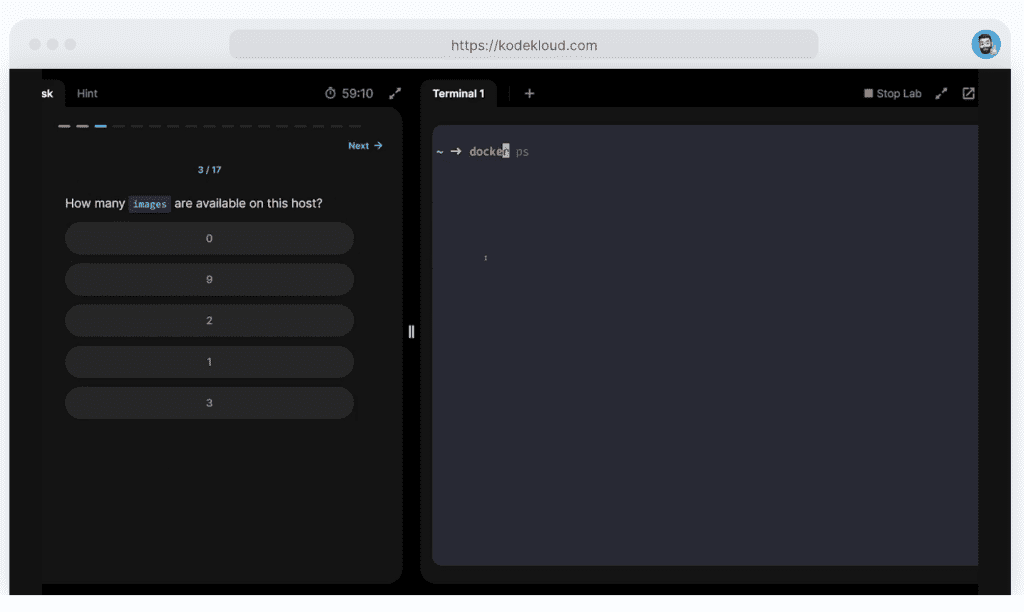
Key Features:
- Out-of-the-box training courses
- Cloud playground sandboxes
- Mock examinations and certification courses
- Slack community support
- Access to a knowledge base
3. Cloudshare
Cloudshare is an online training software that allows teams to create virtual environments for employee training, sales enablement, cybersecurity, and sandboxing. Cloudshare’s virtual training features include options for virtual instructor-led training or self-paced virtual software environments for effective, hands-on onboarding and upskilling.
This solution allows for easy environment creation with self-service provisioning via any web browser, a large library of pre-made templates, and an intuitive editing interface. It also includes reporting and BI analytics tools for ongoing performance management and continual environment optimization. Cloudshare includes pre-configured Linux/Windows templates and integrates with your existing LMS via RESTful API or LTI.
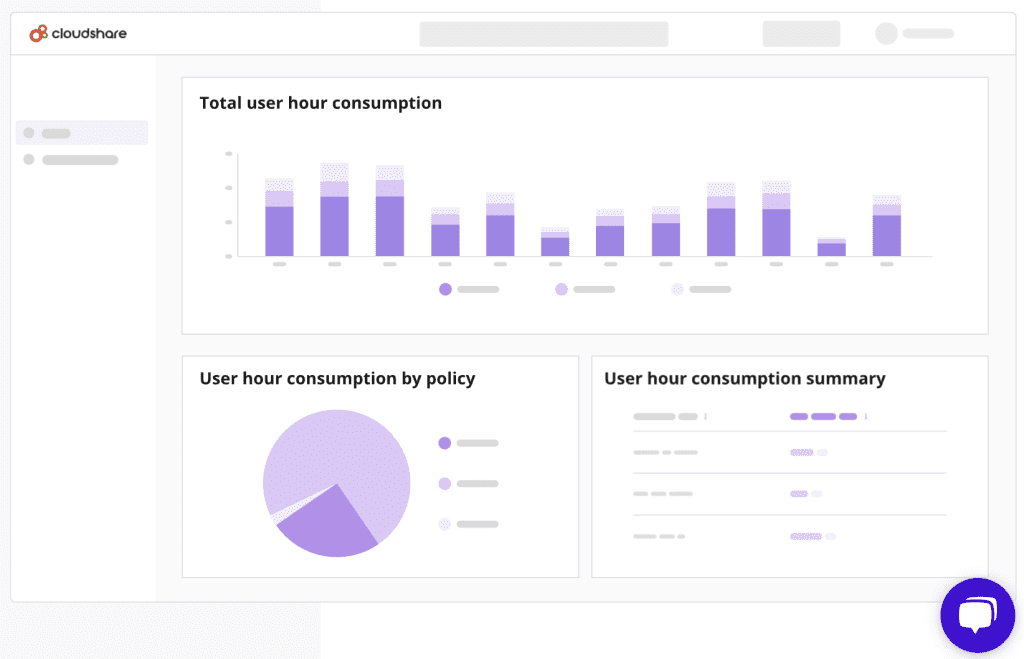
Key features:
- In-app video conferencing
- Over-the-shoulder capabilities
- File and video sharing
- Automated resource control
- Quick environment creation
- Built-in analytics
4. Assima
- Pricing: Starts at CA $2500 per user per month (Capterra)
- Rating: 4.7/5 (Capterra)
- Best for: Systems training
Assima is a world-class solution for virtual systems training. This solution delivers training experiences by allowing L&D teams to clone live systems and edit training instances through an interactive interface. Users can edit all onscreen content and mass-replace data for added security and personalization.
This solution creates editable system clones rather than fully simulated environments, minimizing the burden of required maintenance and data refreshes that other sandbox tools require. Assima also offers other training tools including simulated environments, in-app search, and a digital adoption platform. Assima has been on the market for 20 years and is trusted by companies like Airbnb, Toyota, and Phillips.
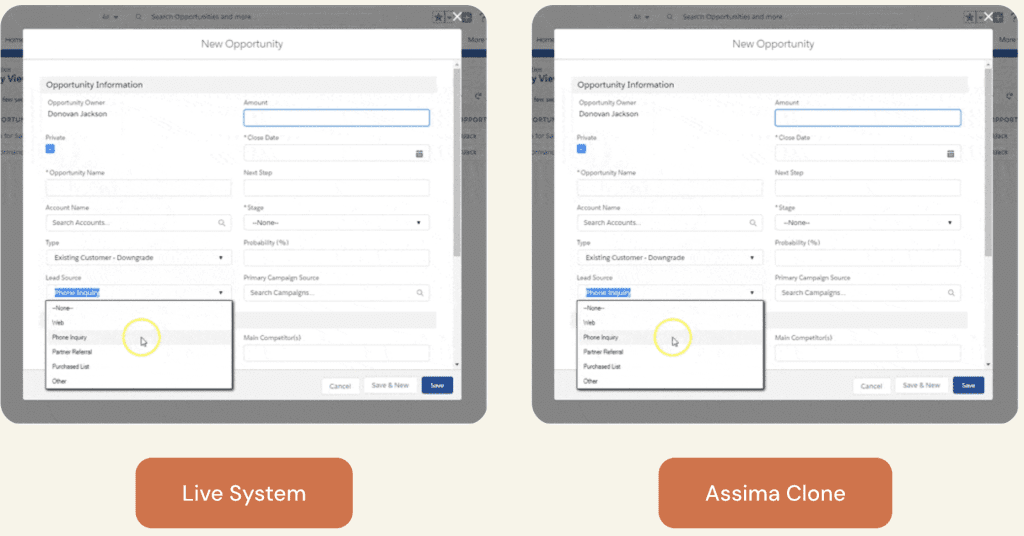
Key features:
- Editable system clones
- Mass data replacement
- Language localizer for lesson translation
- User behavior analytics
5. Bright Software
Bright Software is a learning and development solution designed to provide immersive, simulation-based training, hands-on practice, and AI coaching. Bright includes an LXP that can host and deliver a variety of learning experiences at scale, including live training, video lessons, and software simulations. Bright also offers a practice-based coach-the-coach certification to help organizational leaders build a culture of continuous learning.
This cloud-based platform allows L&D teams to create simulations including conversations and chants to help learners navigate different scenarios and hone soft skills as they operate within the environment. Its no-code editor makes it easy for L&D teams to build training environments and design guided learning experiences to help employees reach proficiency quickly. Bright also includes in-depth user analytics for measuring the effectiveness of L&D efforts and integrates with a variety of software like Workday and Vimeo to maximize its compatibility with your organization’s existing tech stack.
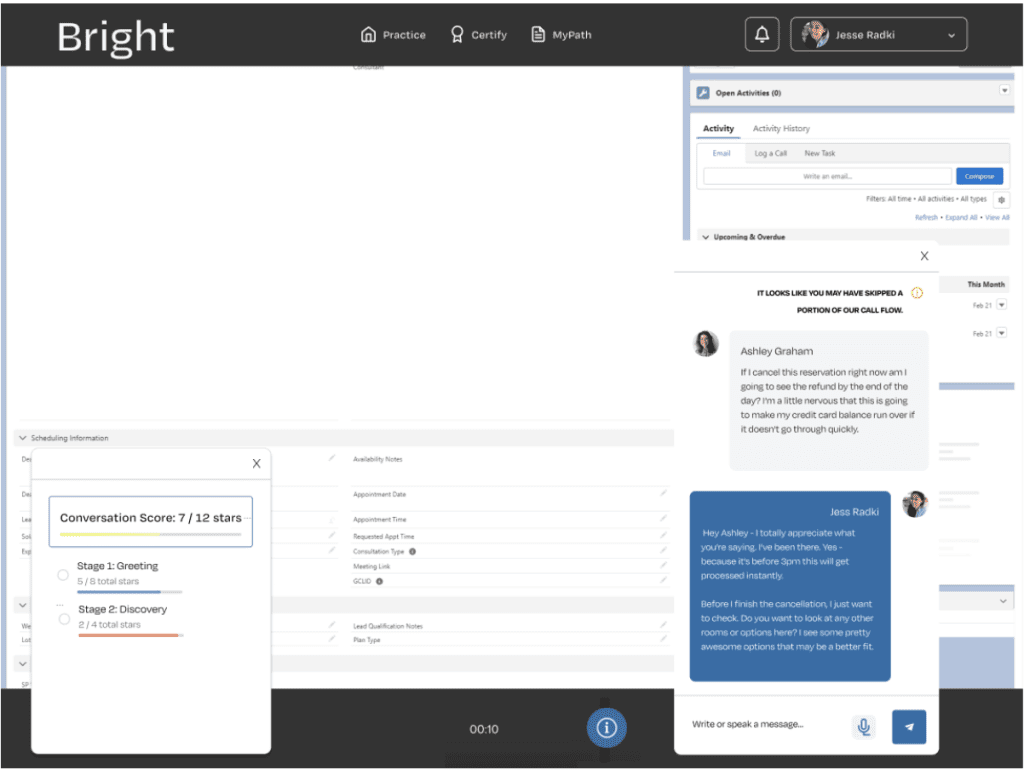
Key features:
- Scenario-based simulations
- No-code simulation builder
- Branching conversation simulations
- AI coaching engine
- Performance analytics
6. ReadyTech
- Pricing: Free Trial, contact vendor for a quote
- Rating: 4.6/5
- Best for: Sandbox environments of enterprise software or hands-on IT training
ReadyTech is a virtual training solution designed to help organizations deliver effective and engaging hands-on training experiences. This software allows L&D teams to host IT training labs with ReadyTech’s cloud or their own virtual labs through AWS, Azure, and GCP. It also includes virtual instructor-led training and self-paced training solutions.
This solution features an easy-to-use interface, allowing L&D teams to create isolated, customized training experiences with course templates, classes, and virtual student seats. Employees can access labs on-demand or as part of instructor-led lessons as part of a comprehensive blended learning program. Readytech also offers a variety of lab hosting options to meet customer requirements and budgets.
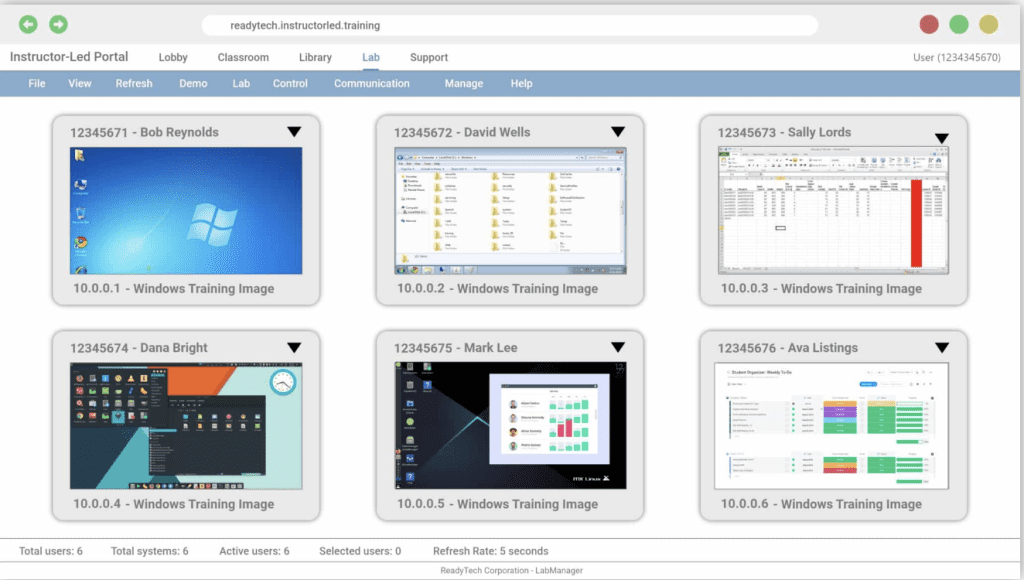
Key features:
- Easy-to-use interface
- Flexible lab hosting options
- On-demand lab access
- Variety of training formats
- 24/7 live support
7. SafeBox
Safebox by Apptimized is a managed, cloud-based virtual sandbox application geared toward testing and running non-standard or problematic software away from live systems. This solution helps teams create customizable, easy-to-use virtual desktops to interact with legacy or suspicious applications in isolation to prevent disruptions and protect against threats of malware or viruses. It also includes snapshot features which allow users to refresh the sandbox to an earlier state.
Apptimized Safebox is easy to use and includes various customization options, making it suitable for employee training and application adoption. Safebox also helps teams minimize IT costs by streamlining application development, maintenance, and licensing. Safebox includes options for users to incorporate their own OS images and licenses to further customize environments.
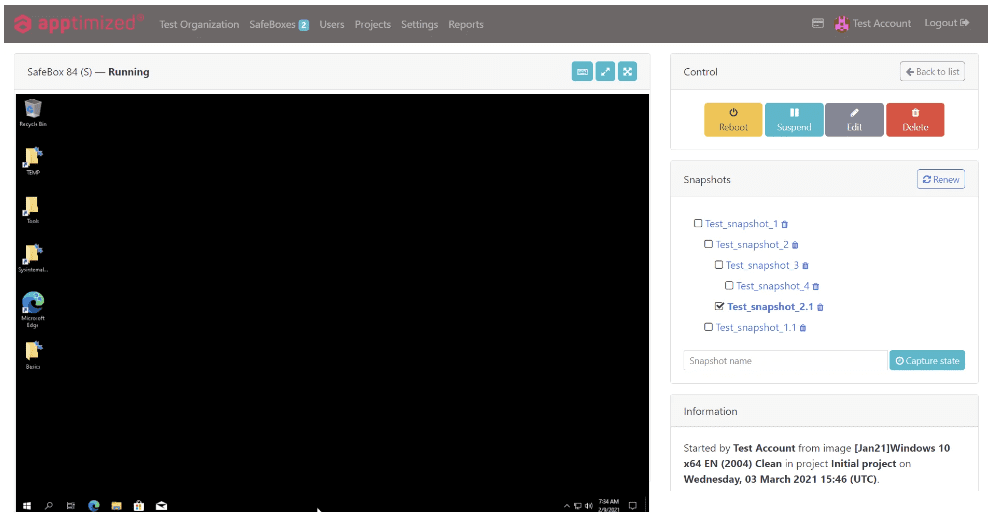
Key features:
- Cloud-based
- Personalization & Snapshot features
- PaaS component
- Added security compared to a local virtual machine
- White labeling Capabilities
8. Appsembler Virtual Labs
- Pricing: Starter plan starts at $49/mo
- Rating: 4.0/5.0
- Best for: Training employees, customers, and developers
Appsembler is an experiential learning platform geared toward hands-on learning experiences through virtual IT labs and Tahoe LMS. These tools allow L&D teams to deliver software sandboxes, training labs, and self-paced courses to provide scalable training and workplace education. Users can load preconfigured environments and take advantage of instant provisioning to easily set up training instances, and customize labs with company-specific tools, configurations, and scenarios.
With Appsembler product sandboxes and virtual IT training labs, users can use simulated environments to train employees, deliver workshops, or launch products. This solution integrates with commonly used learning management systems for centralized training efforts and supports SCORM, LTI, and xAPI standards for maximum compatibility and smooth implementation.
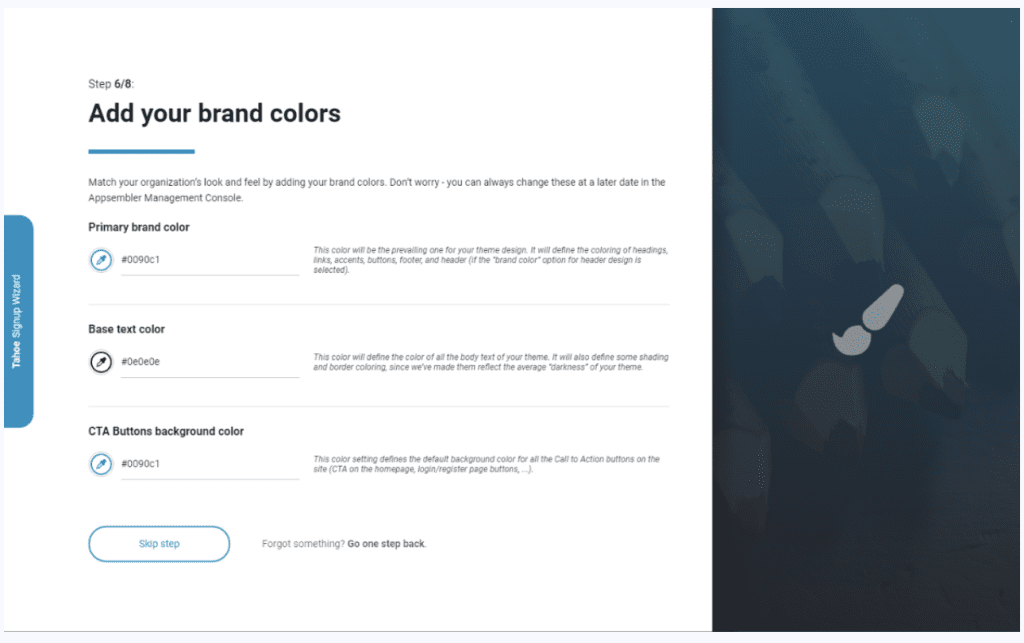
Key features
- Preconfigured environments
- Customizable lab experiences
- LMS integration
- Comprehensive analytics
- 24/7 support
9. CloudLabs
- Pricing: Contact CloudLabs for a quote
- Rating: 4.7/5
- Best for: Creating sandbox environments of enterprise software (think ERP, CRM, etc.) for hands-on IT training.
Cloudlabs is a customer training software that allows L&D teams to deliver hands-on virtual lab training with its robust hands-on learning platform. This solution’s cloud-hosted virtual IT training labs make it possible for employees to learn from anywhere and collaborate with proctors and fellow learners. These environments are customizable for creating unique experiences and include automation to make simulations as realistic as possible.
CloudLabs product includes skill validation including live progress tracking, quizzes, and leaderboards to make learning while providing L&D teams with insights into learner progress. This solution offers live, around-the-clock support to help customers resolve product-related issues.
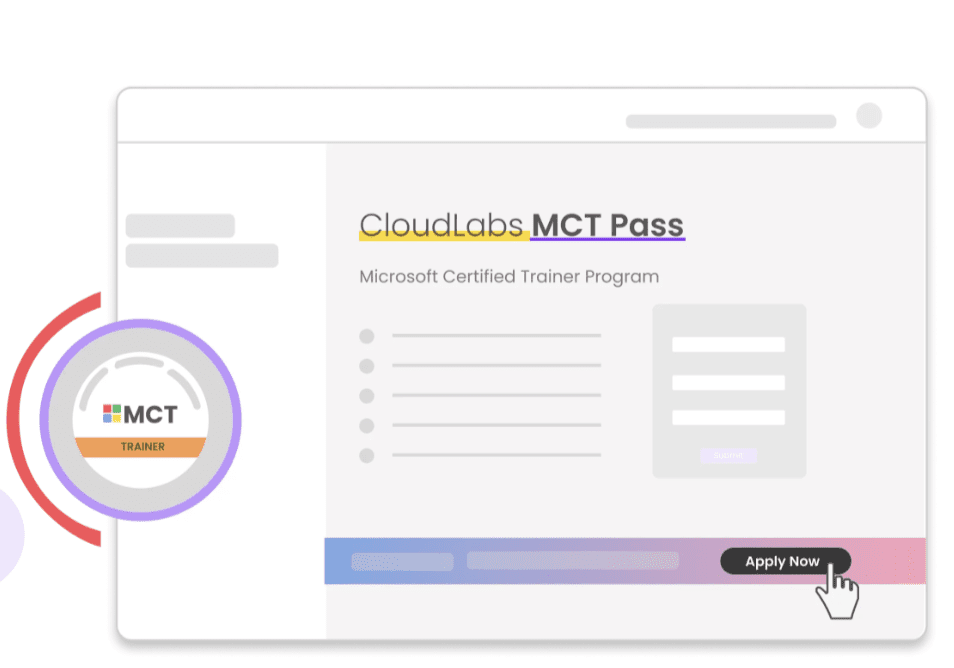
Key Features
- On-demand virtual labs
- Over-the-shoulder view and remote assistance
- LMS integration
- Skill validation
- User collaboration tools
- 24/7 customer support
10. Instruqt
- Pricing: Contact Instruqt for pricing, free trial available
- Rating: 4.9/5.0
- Best for: Creating interactive software demos, product tours, and workshops for IT training
Instruqt is a flexible virtual training lab solution for employee and customer training, product demos, and IT workshops. Instruqt offers immersive training that can be instructor-led or self-paced, with real-time validation. Its sandbox environments are embeddable and can be created instantly and disposed of as needed for maximum efficiency.
This solution allows L&D teams to create custom environments with an embeddable code editor IDE or from ready-to-use Docker and Kubernetes templates. Instruqt offers a stable platform with engaging live events, scalable workshops, CLI testing, and configurable idle timeout. It also comes with automatic user rating and feedback tools, as well as engagement analytics for user behavior insights. Instruqt’s pricing packages are scaled according to customer consumption rather than feature tiers so all Instruqt customers have access to the same features.
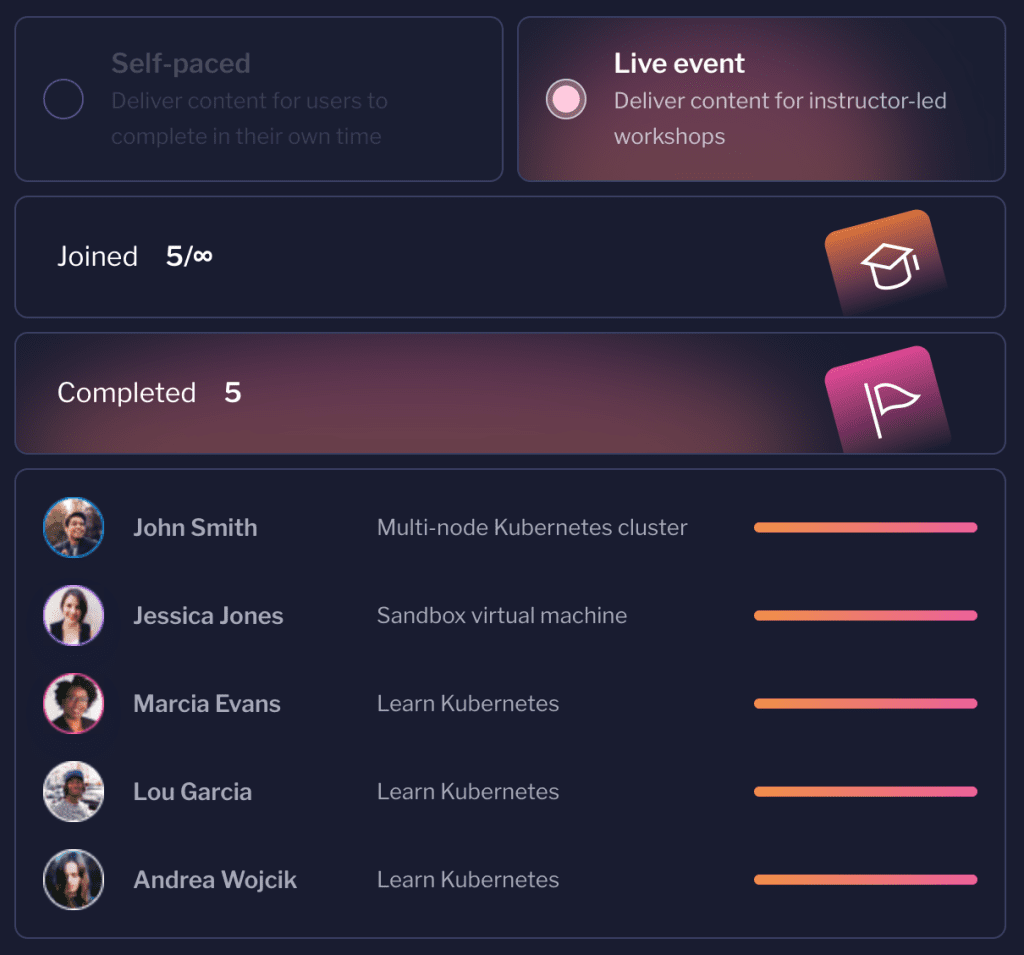
Key Features:
- Embeddable labs
- Ready-to-use templates
- Embeddable code editor
- Disposable cloud accounts
- Multicloud support
11. ITPro
- Pricing: Standard Team plan starts at $399 per seat per year
- Rating: 4.7/5.0
- Best for: Cybersecurity and IT training
ITPro by ACI Learning is a dynamic cyber and IT training solution that includes virtual skill labs, IT certification practice tests, and a course catalog with over 7,000 hours of training content. ITPro’s virtual live-lab environments help learners become proficient more quickly while engaging with training environments at their own pace. This solution includes practice tests that simulate environments of common IT certification exams, providing an optimal virtual setting for test preparation.
ITPro has over twenty courses with associated virtual labs, including IT fundamentals, Linux+, Introduction to Programming Using Python, and CEHv11 and 12. These labs are accessible by members with Premium memberships directly through the courses or á la carte through the virtual lab section of the website.
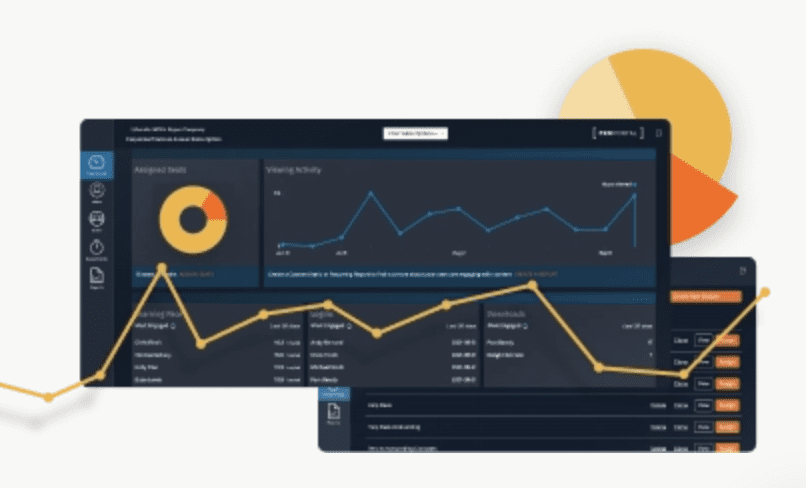
Key features:
- Hands-on and virtual skill labs
- Custom course creation
- IT and cybersecurity training content
- Customized learning paths
- IT certification practice tests
- Usage analytics
How to Choose Virtual IT Labs Software
With dozens of virtual IT labs software on the market, choosing a solution that fits your organization’s L&D needs can be tough. Here are some best practices to consider when choosing the right virtual lab software for your team:
Understand what challenge you’re solving
Start by pinpointing the needs that will be fulfilled by investing in virtual lab software for your team. Consider the key goals of training programming – will employees be preparing for IT certifications, developing specific software skills, or demonstrating the functionality of an application? Tap into manager insights and performance data to answer these questions.
Virtual IT training labs software is especially effective for solving the following challenges:
- Improving IT training efforts for end-users: these solutions allow for hands-on, risk-free training activities that boost knowledge retention and lead to higher performance. Virtual labs are commonly used to train end-users on workplace software like customer relationship management or enterprise resource planning software.
- Upskilling engineer DevOps skills: Simulated IT scenarios help engineers build and learn new IT, DevOps, and other technical skills they need to excel in their roles. Virtual labs can be designed to simulate specific scenarios to help engineers exercise problem-solving skills and experiment with solutions to build agility and confidence. This enables upskilling for engineers, allowing them to build new hard skill sets through hands-on experiences.
- Delivering more effective instructor-led training: virtual labs can be set up with simulated classroom scenarios and combined with instructor-led training activities to deliver blended workplace learning experiences for IT skills.
- Perfecting product demos: sales teams can provide prospective customers with interactive software simulations to demonstrate the capabilities of their products more effectively. By giving customers the chance to experience the capabilities of an application first-hand, sales teams can ensure customers are making fully educated buying decisions and start relationships off on a positive footing.
Once you have established the core challenges to be addressed by your new virtual IT training lab software, you can use that information to begin outlining benchmarks and key performance indicators to measure later on.
Identify users
Next, determine who the end-users of your new virtual lab software will be. Will your new virtual labs be delivered to all employees or only a specific group? Will you also be using it to train external partners or potential customers?
Once you have specified your user base, determine how many and what types of licenses you will need to purchase. If you are serving a smaller group of employees, communicate plans with managers across business areas to avoid licensing redundancies.
Consider integrations
Now that you have a clear idea of who will be using your virtual IT lab software and what they will use it for, consider how you will integrate the new virtual IT lab software into your existing tech stack. Keep this in mind as you review potential software options. If your virtual IT lab software has overlapping functionality with existing applications, develop a plan to minimize redundancies and avoid overspending.
Depending on your organization’s existing IT infrastructure, personnel resources, and budget, you should also determine whether you need to select a virtual lab provider or build an in-house virtual lab environment. Will you need a solution that integrates with your existing learning management system, or will your virtual IT lab stand on its own? These requirements will help you narrow down the most suitable choice for your new virtual IT lab application.
Think about what success would look like with the tool
Next, determine the desired outcomes of your new virtual IT lab software. Consider the challenges you’ve set out to solve and envision the heights to which your new virtual training solution can bring your end users. Use these outcomes to develop benchmarks and key performance indicators to track once your new solution is rolled out.
Tracking performance based on these indicators will help your team demonstrate a return on investment and continually optimize your virtual lab environments.
Evaluate platform support
Depending on the bandwidth of your IT team and the tech-savviness of your end-users, you may need to rely on support from your virtual IT lab provider for issue resolution or project execution. Review the support terms included in service plan options and negotiate an optimal support agreement to be included in your service level agreement once the purchase has been made.
Create virtual IT labs for hands-on IT training with Whatfix Mirror
Whatfix Mirror helps organizations deliver effective hands-on employee training in immersive, secure simulation environments. Mirror helps employees learn by doing without the risk of affecting live data. Our solution makes it easy for teams to replicate IT application environments to provide users with an interactive setting for hands-on, simulated training and user testing.
This solution allows teams to quickly create replica, interactive versions of your IT applications to provide users with a sandbox environment for hands-on, simulated training and user testing. Combined with in-app experiences like Tours, Task Lists, and Flows, L&D teams can guide users through contextual application processes, tasks, and workflows for an optimized learning experience. Whatfix user feedback tools and in-app surveys allow teams to monitor employee sentiment and continually improve learning programming. Whatfix analytics autocaptures user engagement data and product analytics to provide insights to improve application workflows and in-app training content.
Request a demo to learn more about optimizing your company’s L&D efforts with Whatfix!
Virtual IT Labs Software FAQs
Who Uses Virtual IT Labs Software?
Any individual who uses software can benefit from using virtual IT labs, but there are a few key user types:
- IT engineers use virtual labs to practice their responses to resolving various IT issues and securely test updates before project implementation.
- Employee learners use virtual IT labs to adopt new software or improve existing knowledge.
- Sales teams use virtual labs to demonstrate software products to prospective customers.
Types of Virtual IT Labs Software
Many virtual IT lab solutions are built specifically to address certain workplace challenges. Here are some of the most common types:
- Virtual labs for Hands-on IT training cater to enterprises onboarding and training employees on common workplace software like customer relationship management or enterprise resource management.
- Virtual labs for DevOps allow engineers to hone skills through simulated IT scenarios and test development projects prior to launch.
- Virtual classroom labs allow L&D teams to integrate simulated tech environments into instructor-led training coursees for blended learning.
- Interactive product demo software incorporate virtual labs into the sales process to provide prospective customers with immersive software experiences.
Features of Virtual IT Labs Software
Here are some of the most critical features of high-quality virtual IT labs software:
- Lab development tools for creating simulated, non-production environments
- Lab provisioning and high accessibility for avoiding business interuptions
- Live instruction options for delivering blended learning experiences
- Lab reporting, analytics, and feedback tools for performance monitoring and continuous improvement
Benefits of Virtual IT Labs Software
Virtual labs software provide many different benefits for workplace learning and development:
- Hands-on practice enhances learning activities by keeping learners engaged and boosts knowledge retention through experiential learning.
- Protected simulation environments contribute to safety and risk management efforts by allowing users to experiment and learn within the flow of work without affecting live environments.
- Skill validation tools like quizzes and learning activities help L&D teams assess and document user progress and competency.
- Scalability of user volumes, features, and learning content allows teams to accommodate learning needs of employees as your business grows and evolves.
- In-depth analytics and reporting provide insight into end-user behavior and progress to quantify individual learning and company-wide return on investment.
- No-risk environments allow employees in any business area to learn new software or workflows without the potential for damage in a live environment.
Virtual IT Labs Software Trends
Over the past several years virtual IT labs have grown in popularity, and trends show no sign of slowing growth. Here is our forecast for upcoming and continuing trends for virtual IT lab training in the workplace:
- More cloud-based solutions will allow employee learners to access virtual labs at their leisure and minimize the need for IT teams to devote local resources to building in-house solutions. This trend will also make virtual lab solutions more scalable based on the organizational needs.
- Increased demand for remote IT access will further boost the popularity of virtual IT training labs, to provide a risk-free environment for over-the-shoulder assistance. This demand will likely be elevated for organizations with employees working remotely or in the field.
- Continued prevalence of gamified workplace learning will lead to an increase in the incorporation of gamified elements like leaderboards, badges, and built in games, leading to higher learning performance in the workplace.
- AI and machine learning will continue to rise in prominence and fuel the integration of content personalization to personlize virtual lab experiences and optimize learning activities.
- Use for cybersecurity and tailoring for specific industries will increase and lead to an abundance of specialized virtual IT lab products on the market. By catering directly to specific industries or business needs, virtual lab providers will proliferate and spread out to capture learning and development in different markets.
